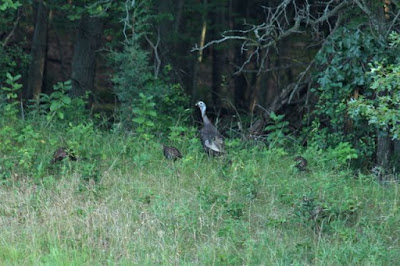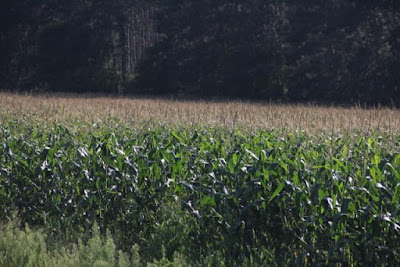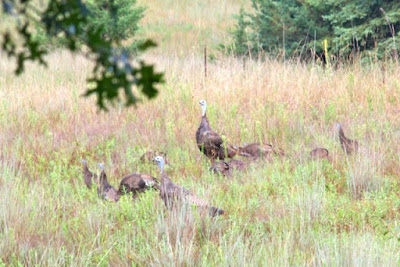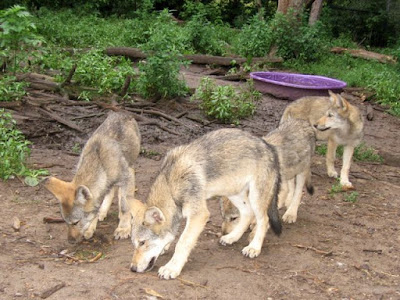 |
| cabin-side creek
Photo by J. Harrington
|
We're back from the North Woods, where we spent several days in an old (built 1930's?) log cabin on a lake, right beside the outlet brook, away from cell phones and Internet service. Once I got over some initial twitchiness, I noticed that my equanimity started to return as my digital exposure to politics and economics was replaced by immersion in nature. We had fun exploring around the Gunflint Trail and discovered many new "public access" locations where fishing from shore was either difficult, because a stream was overgrown with trees, inaccessible due to canyon depth and/or lack of safe parking, unproductive of fish, the cobble rock bottom made wading dangerous, or all of the above. On the other hand, the woods and waters are pretty and the weather was a marked improvement over the Twin Cities' heat and humidity that we thankfully left behind. Daytime temperatures rarely broke into the 70's and the mist burned off the lake by 9:00 or 10:00 am. Now that we're back I need to see if I can manage my addiction to wifi, Internet and cell phones by practicing more Zen attitude and behavior.
 |
| Cadence River
Photo by J. Harrington
|
One way we confirmed we were "Up North" is that asters [Canadanthus modestus (Modest Aster)] are blooming in Cook County, and some roadside shrub leaves have turned bright yellow. I spent time wondering if I lived among so many different trees, if I would have a perspective that wanted to be able to distinguish each of them or if all those trees just turn into forest. I think and hope the former, but the forest mixes we saw had many more species than I anticipated, in mixtures that were less segregated than I expected. We have previously taken several trips up the Arrowhead, usually limited to the area right along Highway 61. This revisit up Hwy 61 to cooler climes took us inland to where the forest seems less shopworn than it does along some of the North Shore Scenic Drive.
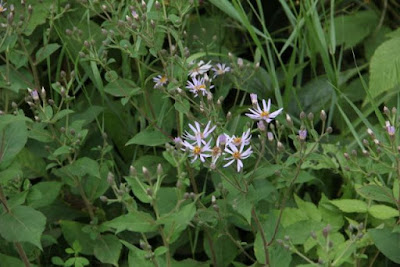 |
| Modest Asters in bloom
Photo by J. Harrington
|
Tomorrow August begins. Summer is beginning its downward slope. We've acquired a never before seen (by us) species at the feeder. I think it's a flicker, a female Gilded Flicker, which belongs in Arizona, not Minnesota. I haven't yet seen any signs of red anywhere in the feathers so we'll keep watching to see if we can tell if it's an immature something or other. Traveling is nice and so is coming home from the North Woods to the Big Woods. My Better Half did a great job of finding a fun, comfortable place to relax for a few days. She did the job so well that we're planning on going back toward late September. There's at least one spot we never did get around to trying to fish. Leaving someone, something or someplace to come back to seems like a worthwhile way to travel, don't you think?
North of Childhood
By Jonathan Galassi
FOR B.
Somewhere ahead I see youwatching something out your window,what I don’t know. You’re tall,not on your tiptoes, green,no longer yellow,no longer little, little one,but the changeless changingseasons are still with us.Summer’s back,so beautiful it always reeks of ending,and now its breeze is stirringin your room commanding the lawn,trying to wake you to say the day is wasting,but you’re north of childhood now and out of here,and I’ve gone south.
********************************************
Thanks for visiting. Come again when you can.
Please be kind to each other while you can.



